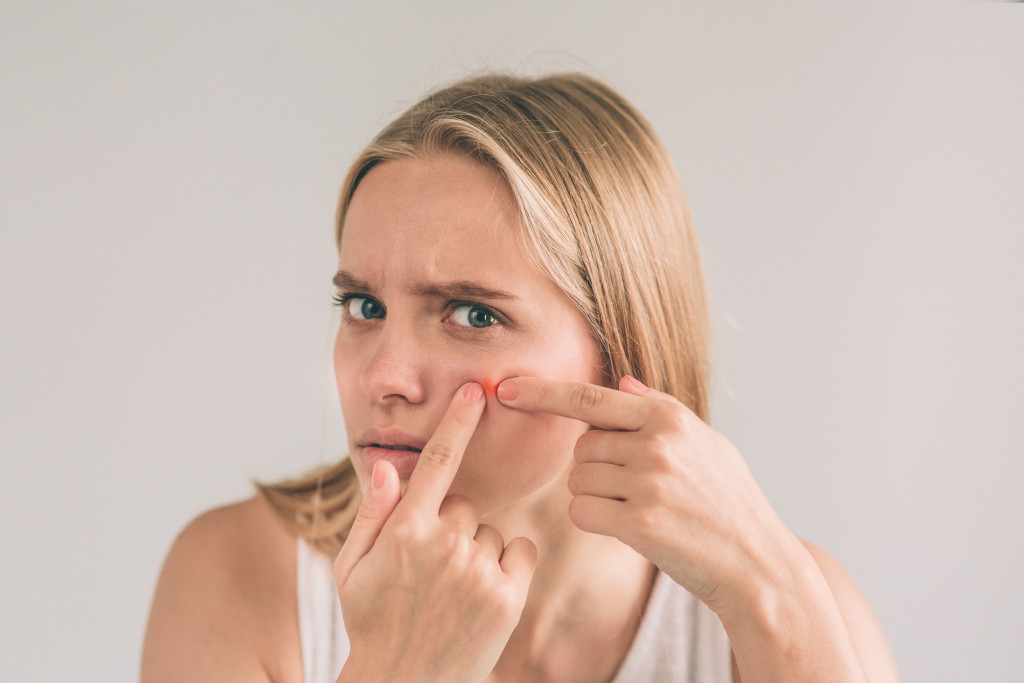If you grew up with acne or are still dealing with it in adulthood, you’d know how much discomfort pimple breakouts cause and how healing the skin can be painstaking. But while you are coping with pimples now, know that you can prevent the formation of new ones, arresting the cycle of more breakouts.
Pimples often develop on the face, but they can form on any part of the skin. Human skin is naturally covered with bacteria that do not cause any harm, typically. The bacterium Propionibacterium acnes is present in most people’s skin, though it causes breakouts in some while not in others. Scientists have discovered that when the bacterium finds itself in an airless environment surrounded by hair and skin cells, it turns sebum into fatty acids. Sebum is the oil naturally found in the skin. The resulting fatty acids cause the inflammation of surrounding skin cells.
To date, there is no definite cure for acne yet. The good news, though, is that you can keep your skin healthy and diminish pimple breakouts.
Explaining Acne: Causes and Symptoms
Acne is a skin condition common among 80% of 11- to 30-year-olds. The leading cause of acne is clogged pores. Pores are susceptible to blockages from sebum, bacteria, hair, or dead skin cells. These blockages result in pimples in different forms.
Causes of Acne
Pimple breakouts can be caused by hormones, especially androgen, which stimulate the production of sebum, heredity, environment, and excessive use of skin products.
Other factors which commonly cause acne are:
- Stress
- Hormonal changes during puberty, menstruation, or pregnancy
- Popping of or picking at pimples
- Vigorous cleaning or friction against the skin
- Pressure from hats, helmets, or bag straps
- Humidity
- Oil-based beauty products
- Certain medications
Symptoms of Acne
The terms “acne” and “pimples” are often interchanged, but there is actually a distinction. Acne is a skin condition affecting skin glands and hair follicles, while pimples are symptoms of the condition.
There are different types of pimples:
- Blackheads: Clogged pores on the surface of the skin
- Whiteheads: Clogged pores under the surface of the skin
- Papules: Small and tender reddish bumps
- Pustules: Papules with the presence of pus
- Nodules: Painful, large lumps beneath the skin’s surface
- Cysts: painful lumps with pus beneath the skin’s surface
How to Prevent Acne and Manage Breakouts
Do Not Pop Pimples
Squeezing out your own pimples may only aggravate the condition because you could be pushing the pus or infection further down into the skin, increasing the risk for inflammation. Also, this may cause scarring.
If you have severe pimple scarring, specialists from aesthetic clinics like Freia Medical can help alleviate this with professional treatment.
Be Aware of Your Skin Type
The first step to caring for your skin better is to know your skin type, so you know which facial products are suitable and which to avoid.
- Dry: Frequent flaking and feeling of tightness
- Oily: Shiny skin, typically by day’s end
- Combination: Oily on the T-zone (forehead, nose, chin areas) and dry on some areas
- Sensitive: Susceptible to irritation and redness
People of any skin type may get pimples, but generally, people with oily skin are more susceptible to acne. Knowing your actual skin type will more accurately determine the suitable acne treatment. Using products not suitable for your skin type may clog pores or cause further damage.
Proper Face Washing
The proper cleansing of the skin to remove dirt, sweat, and excess oil significantly prevents pimples. However, excessive washing of the face may aggravate acne because it strips the skin of the natural sebum. This triggers more sebum production as the skin attempts to regain its natural balance. Higher sebum levels will worsen acne.
On the other hand, harsh astringents and facial cleansers can dry out the skin, also upsetting its natural sebum balance. Experts recommend using gentle facial cleansers free of fragrance and sulfate.
Proper face-washing is done with warm (never hot) water, mild facial cleansers, and gentle rubs by the fingers, not with a washcloth. It is important to rinse thoroughly and just pat dry.
Moisturize
Even if you’re affected by acne, hydrate your skin by using moisturizers. This prevents your skin from excessive dryness, which will result in higher sebum production. High sebum levels trigger pimple breakouts. Make sure to use noncomedogenic and fragrance-free moisturizers.
Hydrate
For the same reasons you need moisturizer for your face, you need to keep your body hydrated by drinking at least eight glasses of water daily. Dehydration causes dull skin, which is prone to inflammation.
Limit Makeup Use
While it may be intuitive to cover up pimples with makeup, makeup can clog the pores, triggering further pimple outbreaks.
Though, if makeup is needed, use fragrance-free and noncomedogenic cosmetics. It is also imperative that you properly cleanse the makeup off before bedtime.
Final Thoughts
It is normal for almost everyone to experience pimples from time to time. Hormones, stress, genetics, and environment are some common factors that may cause acne and pimple breakouts. There are simple care steps you can take to prevent pimples.
